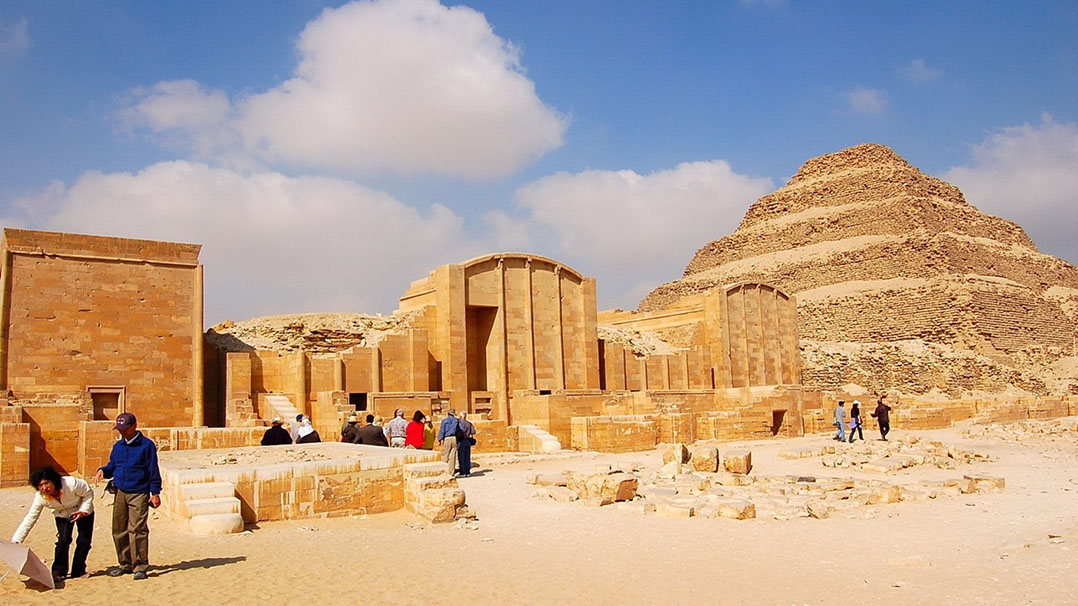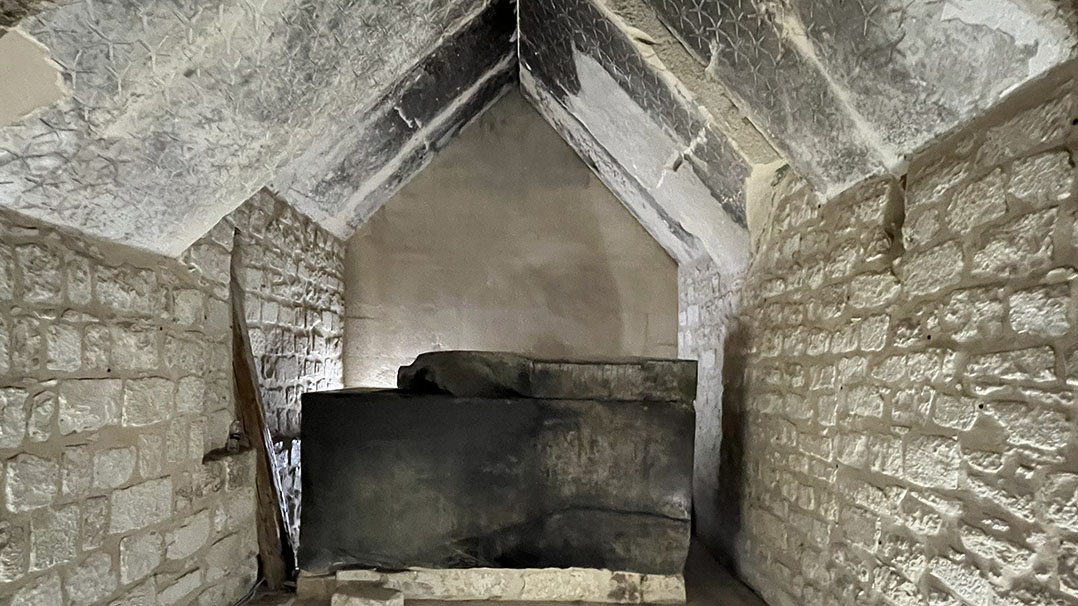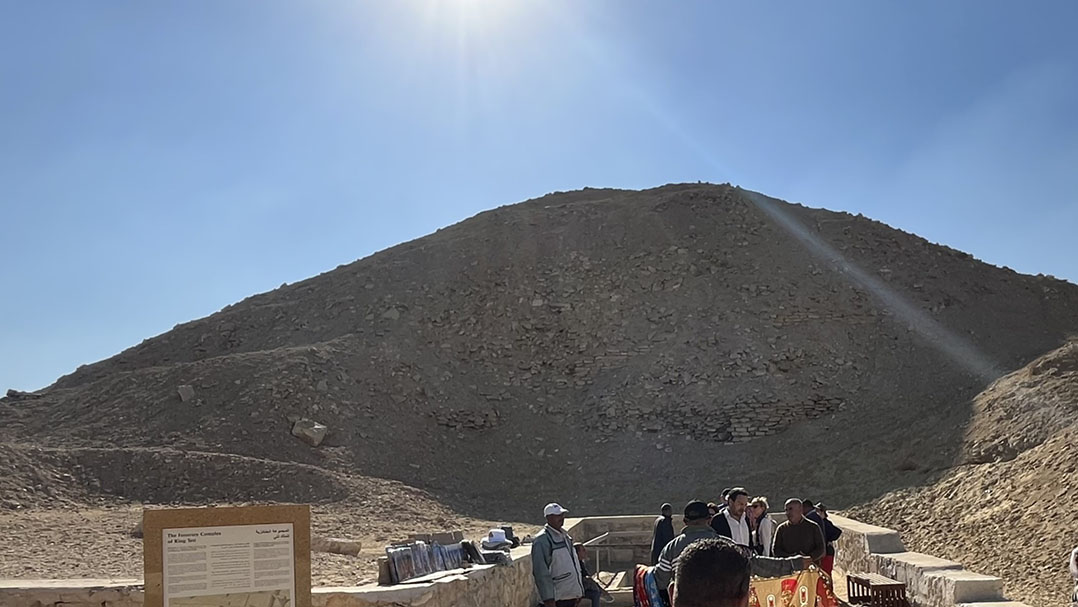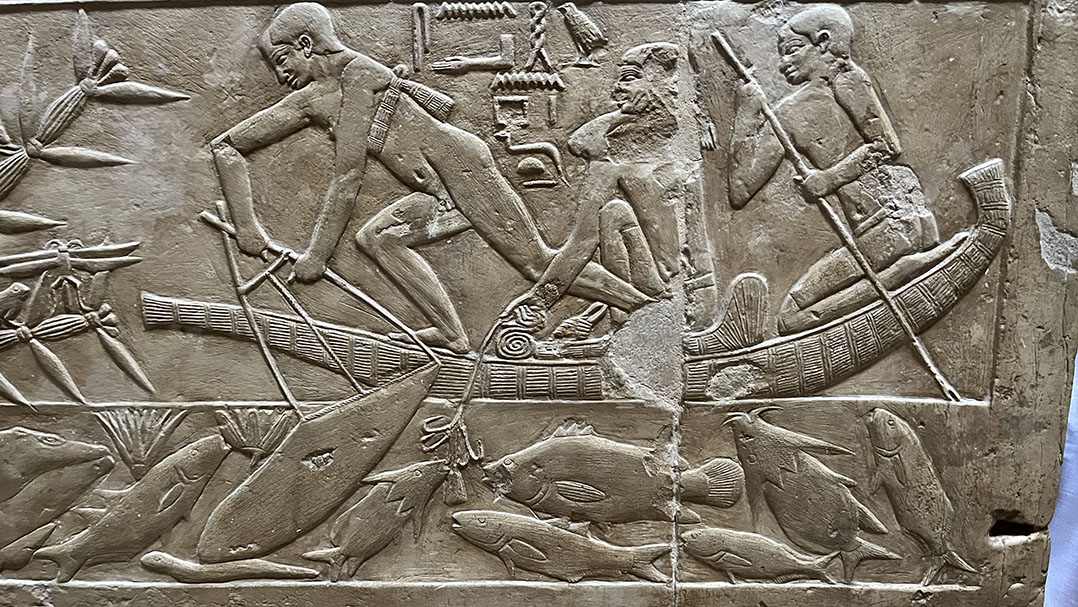As we continue our visit to Egypt, we stop at Saqqara, about 19 miles south of Cairo.
Visitors to Cairo wanting only to say they have “been there and done that” usually go first to the famous pyramids on the Giza plateau overlooking the city. But visitors wanting to understand those pyramids often go first to Saqqara, a royal burial ground that long preceded the Giza pyramids. The most important structure at Saqqara, once protected by a wall, is the stepped pyramid of Djoser, the world’s oldest cut stone monument and the inspiration for the Great Pyramid of Giza, erected about 100 years later. The stepped pyramid was designed by an architectural genius named Imhotep, later proclaimed a god, to protect the mummified body of Pharaoh Djoser, who ruled Egypt for about 20 years in around 2650 B.C. The pyramid, with a base almost 400-feet square, was constructed from six stone mastabas, flat tombs previously made of mud bricks, stacked atop each other in decreasing sizes, reaching a total height of 205 feet. The stepped pyramid was originally covered in gleaming white limestone.
Later pharaohs and important nobles selected the 2,500-acre Saqqara site for their tombs, some of which can now be entered. The pyramid of Pharaoh Teti, who ruled Egypt from 2345 to 2323 B.C., is little more than a pile of rocks today, showing how quickly Egyptians lost the ability and/or resources to erect enduring pyramids. However, Teti’s pyramid is now open to the public and allows visitors to see the pharaoh’s sarcophagus in a small room at the end of a narrow corridor sloping toward the pyramid’s center. The nearby multi-room mastaba tomb of Kagemni, Teti’s most important minister, includes on its walls magnificent carved reliefs illustrating Egyptian life at the time, including detailed scenes showing fishing and farming.








